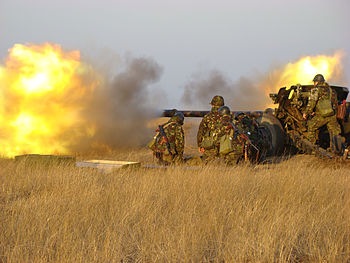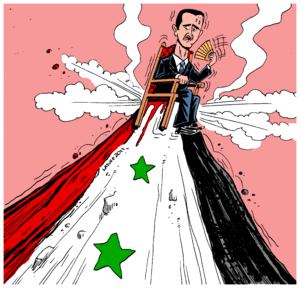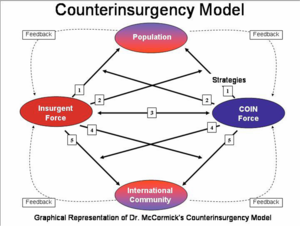As part of my Creative Writing course I need to write a short story for my next assignment. So rather than racking my brains about it I’ve been going back over stuff I’d written, but not finished, in the past for some inspiration. I also plan to do the exercises in the book to see what that sparks up too. Anyway I was looking through my role-playing archives and went through a fantasy game I used to run where I made up all of the setting myself rather than using a published one (there are about 17k words on this, and on top of that a stack of index cards). I was rather taken by the creation myth I wrote for the primary god in a theocracy.
Daprav
It is important to distinguish between Daprav Himself and the Church, which forms the bulk of his worshippers. Daprav is an active paternalistic God by inclination. He favours wandering amongst his people in disguise, perhaps to keep an eye on them. He is also known for speaking to His prophets in the heart of their soul, although He is not above manifesting should those prophets need a major miracle performing.
The worshippers of Daprav don’t have faith, they have knowledge. The evidence of His existence is a daily phenomenon. His priests work many miracles and are enjoined to look after the flock, tending the ill and feeding the hungry. This is tempered with an injunction on the people to obey the word of Daprav, and by extension of the priesthood.
In the beginning…
Daprav is the creator of the world and all the things in it. He did this a very long time ago and spent many millennia wandering through it revelling in the beauty of his creation. He taught the early men a great deal and established many temples, each bearing slight differences according to the aspects he displayed to the tribe that built the temple. However all men were one in their devotion to Daprav and he was able to ensure that there was no strife.
One day whilst hunting with the Obor Tribe in the great fastness of the Green Forest Daprav came across an enchanted grove. This intrigued Him as He had not enchanted the grove nor had any of the priests that He had empowered with his miracles. Entering the grove He called out to its enchanter. Out from behind a tree stepped a powerful sorceror. Daprav commanded him to speak his name.
“I am known as Hapt and I was born to work magic”.
Others also stepped out from behind other trees numbering thirteen in total. They also spake their names:
“Temed, the giver of gifts” a female holding a box;
“Mistear, an archer of great repute” a slim young woman knocking an arrow to her longbow;
“Miral, the killer of many” an older male with many scars on his body and a huge axe;
“Dado, an enchanter, I created this grove” a bearded man in white robes with a golden sickle;
“Fabrius, also a creator of magics” a youth short in stature and stocky with it;
“Eubulus, a singer of songs and a teller of tales” a young man in patched clothes and holding a set of pipes;
“Aulos, the healer of wounds” a woman wearing white with braided blonde hair;
“Horin, the lover of all” a full-breasted woman with red lips and a jar of wine;
“Mousai, protector of the innocent” a man clad in armour from head to foot;
“Drok, the joker” a mischevious looking youngster dressed all in red;
“Valdese, a brave and gallant warrior” tall, dark and handsome, a man to break the hearts of many a maiden, and to carry off the souls of men in battle;
“Ojibwa, a thief and a damned good one” a medium sized woman with a lithe look to her movements as she stepped out from behind the tree.
“Why have you enchanted this grove? And why are you all here?” Daprav asked.
“We want to be Gods also, and you have the means to make that so.” Answered Hapt who appeared to be their leader. “We are the foremost amongst our kind and desire to share your divinity. Will you give it to us?”.
“No. This cannot be so. You must go from here and forever banish any thought of elevating yourselves to godhood”.
“If you will not co-operate then we shall take it from you.”
And with that the thirteen worked their magic as they had planned. They cast a spell on Daprav the like of such has never before or since been seen. Their careful preparations however went awry. Instead of stealing the Divinity from Daprav they instead put him into an endless slumber. They were able to visit the world as spirits and speak unto the people thereon, but were forever banished as punishment for attempting to make themselves Gods.
Had Daprav not been sent into a deep sleep He would have been able to counter their dealings with the various tribes and prevent the strife that was to come to His perfect creation. Each of the thirteen brought their own gift to the world, and with it some corruption of the people. Over the years the tribes formed their own sects and religions as the memory of Daprav was corrupted and forgotten. In time all living people had forgotten of Daprav’s very existence. However He continued to exist, trapped in the sacred grove.
After about two millennia the growth of the tribes had reduced the Green Forest to a fraction of its former size and brought the grove from the depths to its very edge. He appeared in a dream to His prophet Reatham who was sleeping nearby. Reatham was a hunter and Daprav placed images of plentiful game in his dreams along with clues to the location of the grove. Reatham found his way to the grove and woke Daprav.
After such a long hibernation Daprav was weak and required sustenance to build His strength back to its former glory. However with no followers or temples He could not gain strength from sacrifices. Reatham went out amongst the people and preached to them about the goodness of Daprav. However not all was well with the world. The spirits of the thirteen were still strong and afraid that an awakened Daprav would take revenge on them stirred up the people to act against Daprav’s supporters.
Reatham was killed by an angry mob incited by the spirit of Miral. The mob were persuaded that Reatham was enthralled by an evil spirit that meant to destroy the livelihood of the town. It was all Daprav could do to avoid being torn apart himself. After escaping from the mob He travelled about the world gradually building up strength and itinerant followers one by one. After some time He spoke to Rontium and commanded that he feed the poor and homeless in his district and to tell them that the food came from Daprav.
Strengthened by the prayers of the faithful Daprav was able to regain some of His powers and perform minor miracles. Many of the worshippers didn’t realise that He was the deity and instead thought Him to be a priest of Daprav, so diminished was His power. One believer who saw Him truly was Anley, a lay healer. She helped and healed the sick in His name. This boosted His following still further and in time restored more of His powers.
It was about this time that the worship of Daprav became the main religion in the small town of Balham, now known as Templeton. With the growth of His following He was able to stand up to the spirits of the thirteen and make overt use of His powers to protect Balham. It was about this time that the Duke of the District was persuaded by the spirit of Miral to destroy Balham and kill all of the people living there. He gathered his forces and attacked the town.
Daprav called down a lightening bolt from the heavens and smote the Duke from his saddle. Many of the disheartened troops fled, although many others switched sides and pledged their allegiance to Daprav, including Earl Shabas who vowed his life to the God to atone for his previous wrongs against the people of Daprav. Daprav heard the oath and granted him the name of Sir Waldo with His blessing and the ability to heal the wounds of others simply by laying his hands on the afflicted part. Sir Waldo went on to lead his men to glory in the wars of independence that the Church of Daprav fought with those misguided by the spirits.Â
Like this:
Like Loading...






















































